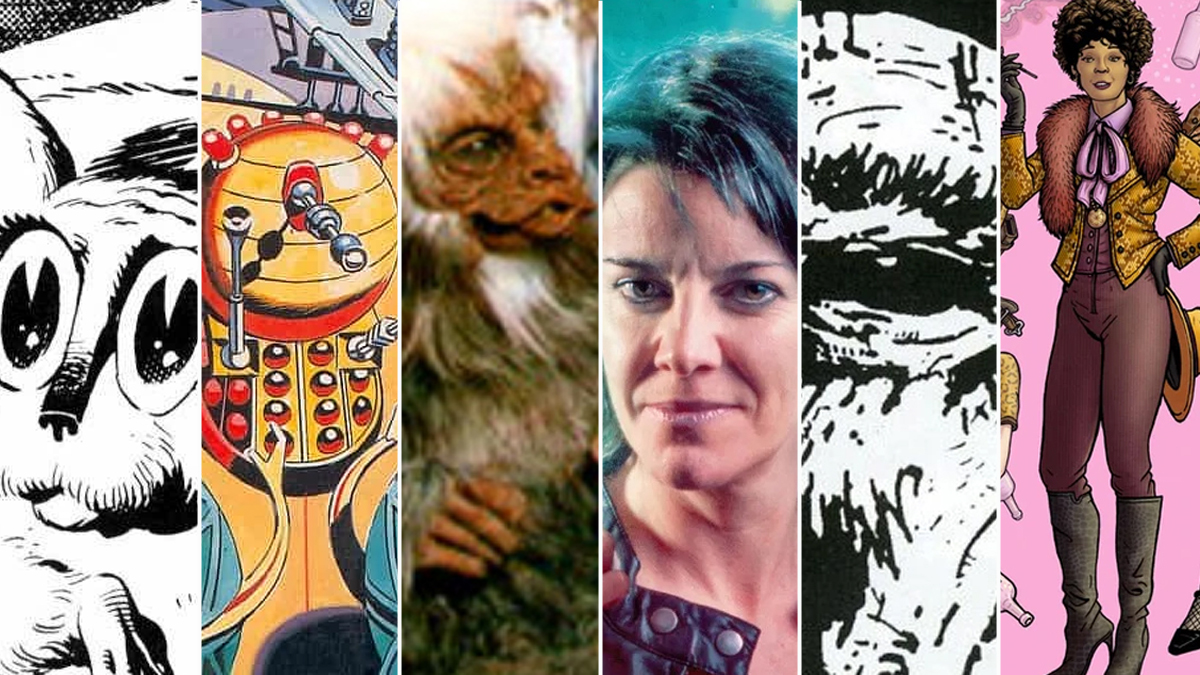Warning: contains potential spoilers for the 60th Anniversary Special
In June 2022, photos from location filming in Cardiff yielded some images of creatures that will appear (barring a hilarious amount of misdirection) during Doctor Who’s 60th Anniversary. If you don’t want to know any more, stop reading now.
In the Summer 2022 issue of Doctor Who Magazine Russell T. Davies, showrunner and writer for the anniversary, commented: “Some monsters might be glimpsed. Monsters which might well be familiar to readers of DWM. Well, familiar, but new. Whatever that means.”
This appears to confirms the appearance of Beep the Meep and the Wrarth Warriors who originally featured in a Doctor Who Weekly comic strip (by Pat Mills and John Wagner, art by Dave Gibbons) in 1980 (with further appearances in the magazine, annuals and a couple of Big Finish audio plays).
For the unaware, Beep the Meep is like a cross between a rabbit and a bat and a beanbag. He looks adorable, and is wanted for crimes against multiple species having escaped the destruction of the Meep armada in a battle against the rest of the universe. The Wrarth Warriors are genetically engineered insectoid space police. Beep used black star radiation, which had turned the originally peaceful Meeps into warlike beings, to power his ship and hypnotise people into doing his bidding.
Doctor Who has explored this discrepancy between visuals and morals, cuteness and horror on a few occasions (the Rills and Drahvins in ‘Galaxy 4’, the Adipose in ‘Smith and Jones’, the Pting in ‘The Tsuranga Conundrum’), only here the comic medium allowed for visuals such as a huge spaceship hanging over a small Yorkshire town, and to really ramp up the cuteness of Beep in contrast to the Wrarth Warriors (who have prehensile tongues, not unlike the xenomorphs in Alien).
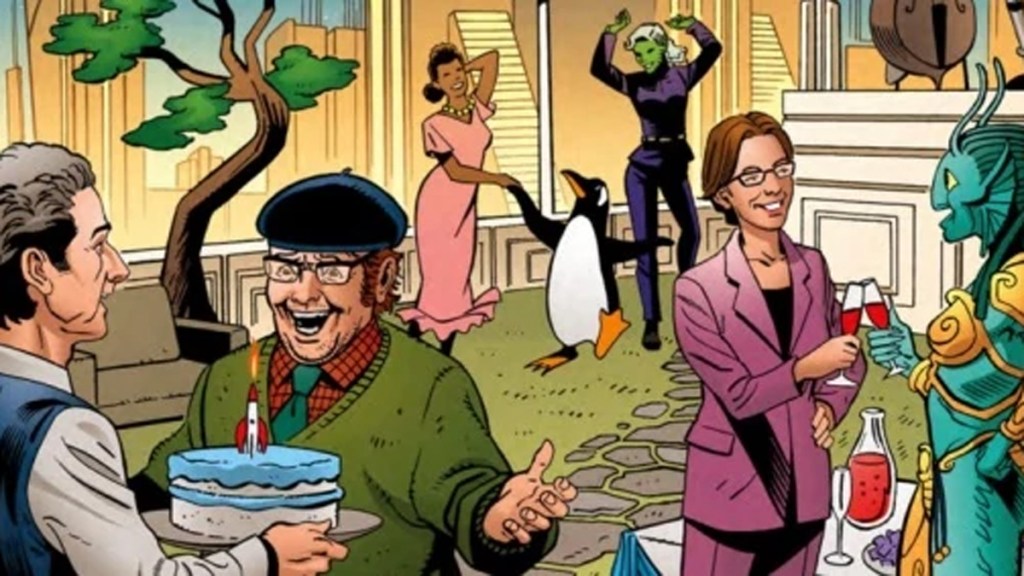
‘The Star Beast’ comic also saw the introduction of another recurring character: Sharon Davies was the first companion in the Doctor Who Weekly comic strip, her first trip was to a planet called New Earth, and she reappeared in the 500th issue of Doctor Who Magazine in a strip called ‘The Stockbridge Showdown’ (the village of Stockbridge being a setting that has recurred since the very first strip). Here, the 12th Doctor teams up with multiple characters from the magazine’s comic strip including Sharon, seen above dancing with Frobisher (a shape shifting private detective who mostly took the form of a penguin), with Maxwell Edison (UFO enthusiast), Majenta Pryce (former criminal and companion to the Tenth Doctor), Destrii (an amphibian gladiator from a tricky family situation) and Izzy (a teenage geek struggling with her identity).
Including Beep the Meep in the 60th anniversary is a lovely way to involve the history of the comic strip in these celebrations. Because we can dream, and also it’s funny to confuse notions of canon any further, here are five more spin-off characters we’d love to see (however briefly) on TV someday:
Yarvelling
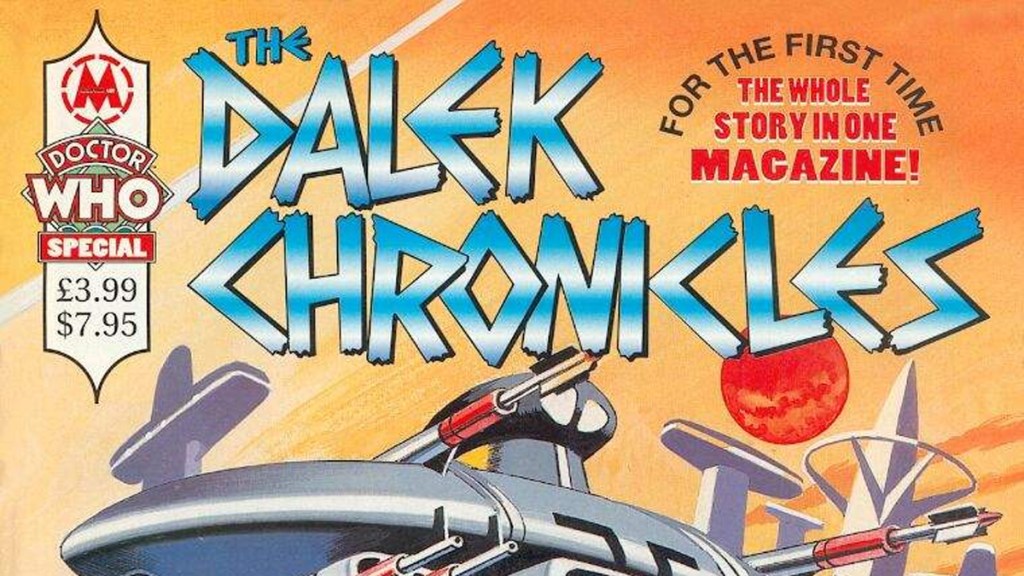
‘Genesis of Evil’ is a 1965 comic strip published in TV Century 21, the first of their strips featuring the Daleks as the main characters. Co-written by David Whitaker (the first Doctor Who script editor) and Alan Fennell (a major creative force on several Gerry Anderson series, especially Stingray, and the author of the novelisation of the 1973 film Digby the Biggest Dog in the World), this story showed readers the creation of the Daleks a decade before we saw it on telly.
In this version, Yarvelling was a Dalek scientist working for military leader Zolfian, and the Daleks were humanoids at this stage, at war with the Thals on the planet of Skaro. Yarvelling designed robots to take care of any Thals who survived a neutron bomb attack, but a meteorite storm entered Skaro’s atmosphere with the devastation causing the neutron bombs to detonate. Yarvelling and Zolfian sheltered until the radiation levels had dropped, and found a devastated planet with a burgeoning new race of Daleks, the war machines now populated by the mutated remains of the species. Yarvelling and Zolfian start work on expanding the new race before succumbing to radiation poisoning.
‘But what about canon?’ you may well ask. ‘Surely this contradicts the events of ‘Genesis of the Daleks’?’ Of course it does. That’s one of the reasons why it’d be fun. ‘Genesis of the Daleks’ changed Dalek history itself, and this is a show involving time travel. Also Doctor Who’s writers make it up as they go along. So why not bring in an alternative history of the Daleks to conflict with the televised one? Even if it’s just a throwaway line, or a momentary ‘What if?’ moment where Yarvelling meets Davros (and probably calls him a ‘sad, strange little man’), I bet we could get ‘Yarvelling’ trending on Twitter afterwards.
Zog
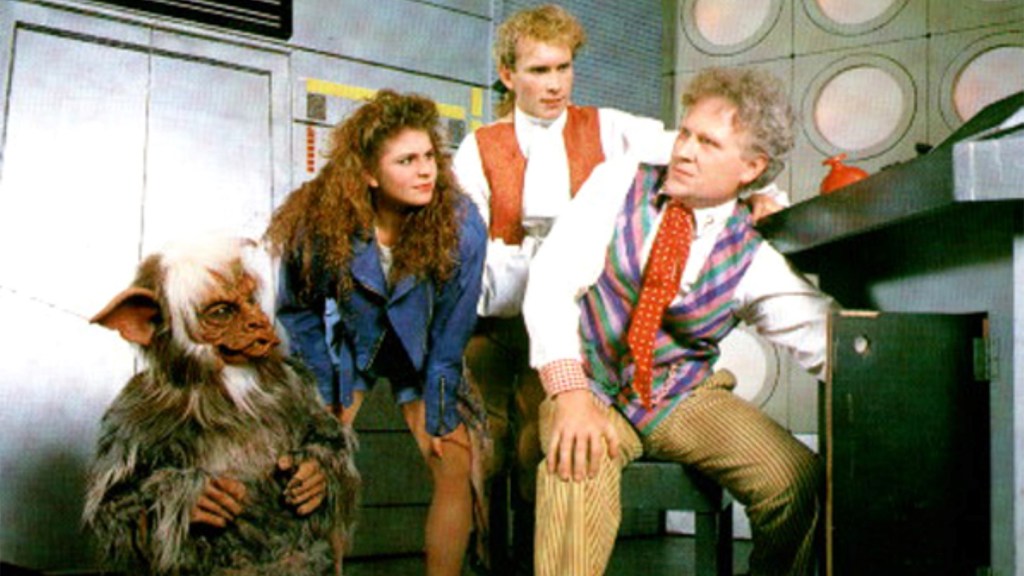
Zog appeared in the stage play ‘Doctor Who – The Ultimate Adventure’ that appeared on stages across the UK in 1989. Featuring Jon Pertwee and then Colin Baker as the Doctor – with a brief interlude where Cyber Leader actor David Banks took over the role when Pertwee was ill – the play featured musical numbers and cameos from a number of monsters. From the Wikipedia plot summary:
“The story involves an alliance between the Daleks and the Cybermen who have joined forces to kidnap the American Envoy and ruin a peace conference on Earth. The Doctor’s companion is a Frenchman named Jason. After failing to stop the Cybermen from taking the US Envoy from a nightclub, they are joined by a singer named Crystal, who works there. Following a trip to Altair Three and then the Bar Galactica, they meet Madame Delilah but are forced to flee along with a small furry creature called Zog.”
We meet said small furry creature enslaved and working the bar. Come the play’s end, Zog continues to travel with the Doctor, Jason and Crystal. Steve Lyons’ short story ‘Face Value’ suggested Zog was actually plotting to take over the universe, unbeknownst to his friends the Time Lord, the nightclub singer and the French aristocrat, but who knows how that story ends?
Voyager
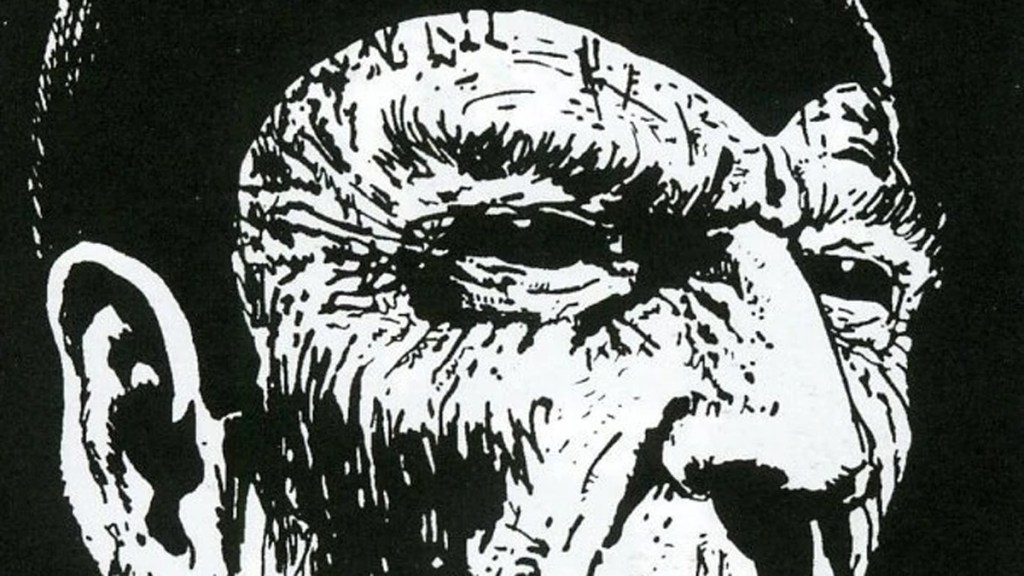
Voyager appeared in the Doctor Who Magazine comics in 1984 as part of Steve Parkhouse and John Ridgway’s run, collected in a comic book of the same name. A surreal and haunting story with a hefty amount of author insertion, Voyager is mostly about the Doctor chasing a Time Lord explorer-turned-thief called Astrolabus through time to retrieve stolen star charts. These belong to Voyager, an enigmatic and incredibly still being who piloted his death-ship (which, like the crafts in ‘Enlightenment’, resembles an Earth sailing ship) around the edges of the universe (as represented by sheer waterfalls). It could move off the edge of the universe into the Void, further connecting it to the Eternals from ‘Enlightenment’.
Voyager claims to be a ‘Lord of Life’ as the Doctor is a Lord of Time (see also: the Word Lord from Steven Hall’s Big Finish stories, who could have been on this list but it feels like his story is done). Voyager pre-dates the Time Lords and seems to have become the basis for one of their mythic, ancient texts. If the character’s enigma is preserved, Voyager could be a powerful and memorable addition to a story as a means of instigating a quest or someone to steal a McGuffin from.
Iris Wildthyme
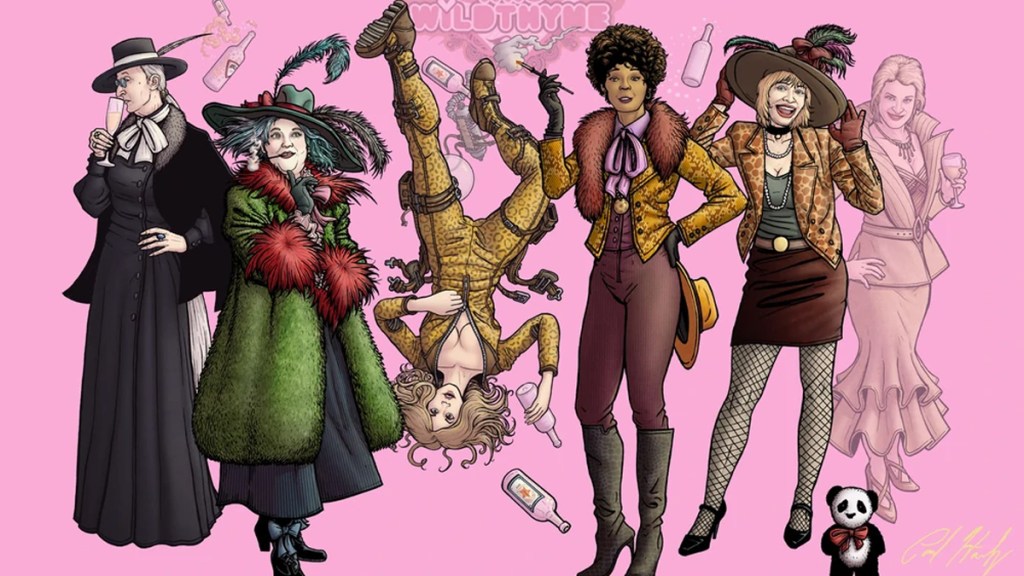
With her TARDIS shaped like a bus and meeting the Doctor in a non-linear fashion, aspects of Iris Wildthyme have appeared in the show already. Created as a parody of the Doctor, Iris is a character who has already crossed over from books to audio and whose knowingly contradictory life story allows a certain flexibility in depicting her on screen. Indeed she often looks like real-life actors throughout different incarnations, so you could have a big-name star playing a new incarnation (Jane Fonda, for example).
The development into parody and meta-fiction means that creator Paul Magrs has appeared as a character in Iris Wildthyme stories, and Iris knows that she’s a fictional character. The Doctor suspected that her non-linear presence in his life might be due to the Faction Paradox (a cult devoted to destabilising time who I haven’t included in this list because their creator has suffered enough).
You could try to write an episode where Iris and the Doctor have a tetchy relationship through a knowing romp, or you could just have a drunken cameo featuring Sandra Bullock.
Bernice Summerfield
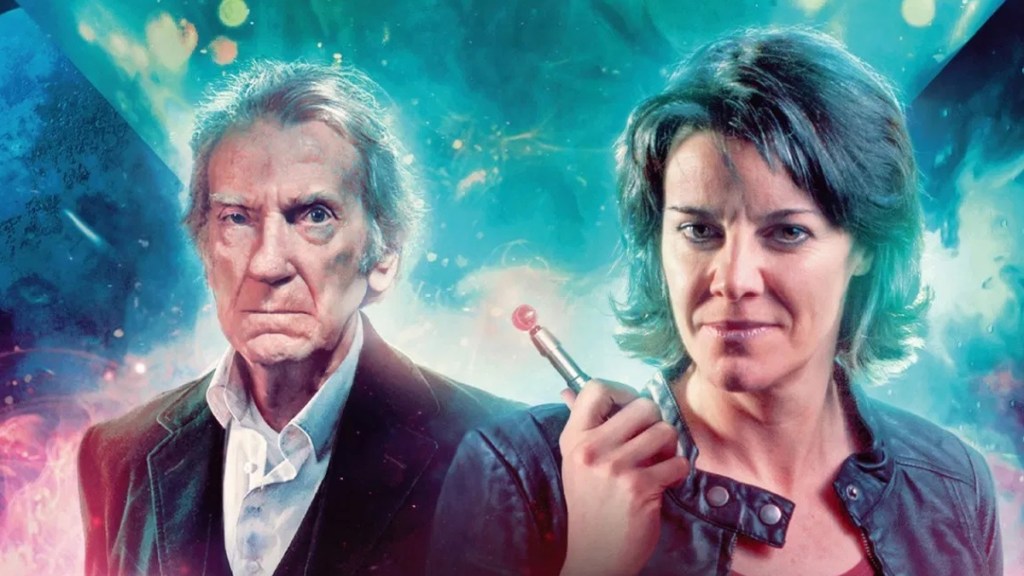
Another character who is partly recognisable in a TV character, Bernice first appeared in the 1992 Virgin New Adventures novel ‘Love and War’, a story that temporarily wrote out Ace as the Seventh Doctor’s companion. A sarcastic archaeologist who liked a drink, she remained the Seventh Doctor’s companion for the most of the remaining books in the line, before making one appearance with the Eighth Doctor before the book rights to Doctor Who were taken back by the BBC. She then led the Virgin New Adventures line before Big Finish started adapting books into audio plays. After 11 series, then 6 boxsets, we are now on six series of ‘The New Adventures of Bernice Summerfield’ with a seventh due to follow in September 2022. Bernice was probably 30 when we first met her, and 30 years later she’s still headlining spin-off series.
The importance of Bernice is hard to quantify in the current context: when she first appeared, Doctor Who was nine books into a new format – novels instead of television – that was more adult orientated. ‘Love and War’ was one of the first books to suggest the approach would work, not containing sex and gore for the sake of it and working on a bigger scale than TV would ever have allowed. Bernice was the companion for the novel ‘Human Nature’ that was adapted for television: she rather than Ace became the character who allowed the darker version of the Doctor to avoid being one-note, to reflect his flaws back at him. At their best, the New Adventures expanded what Doctor Who was capable of, and Bernice was a big part of that. Given that legacy, it’d be nice to have her also getting drunk with Iris and Zog.
